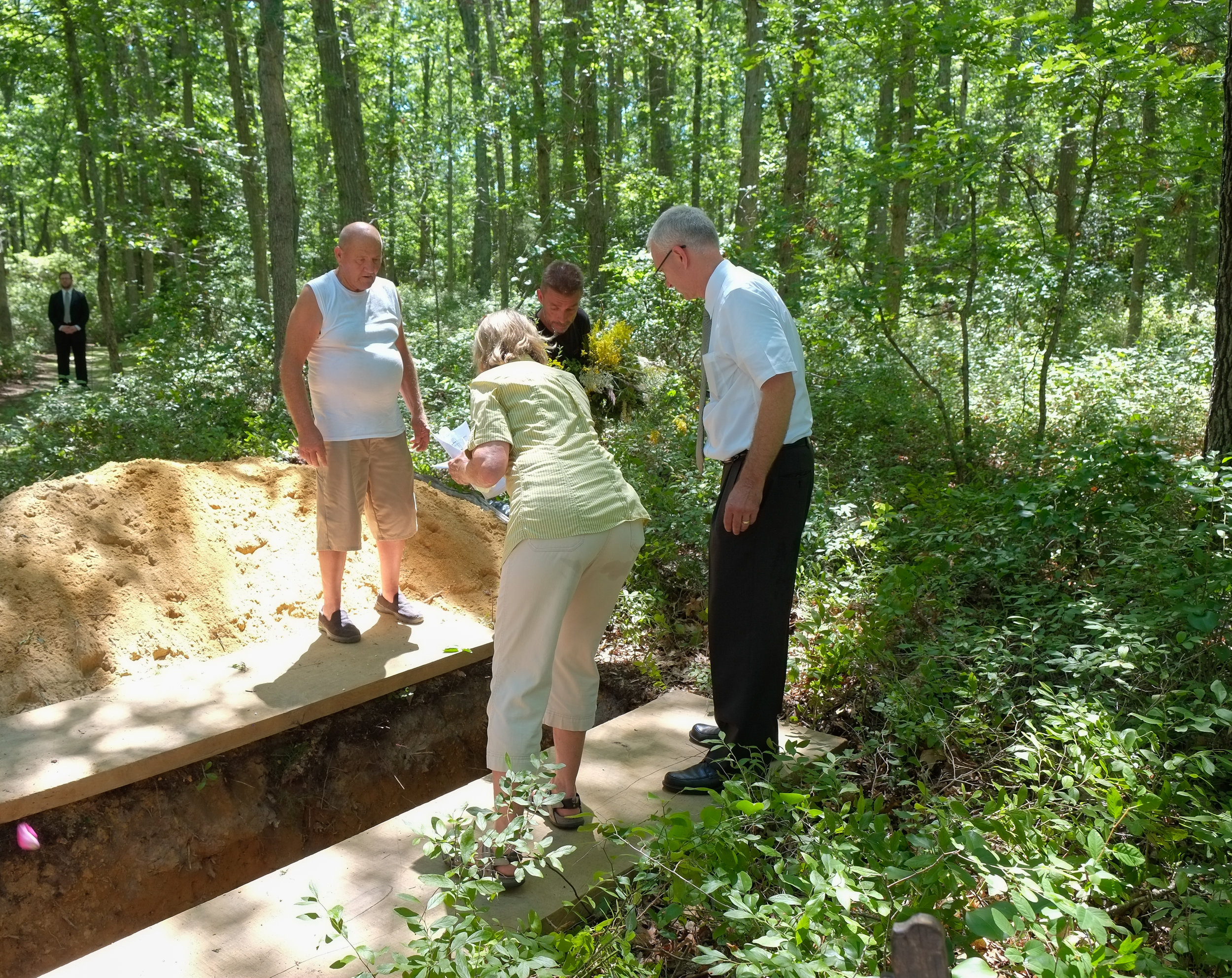Groups desiring to make green burial work in Vermont recently shepherded a bill through the state House of Representatives to raise minimum grave depth from 5 to 3.5 feet, considered a shallow depth that provides adequate cover for a burial. Michelle Acciavatti, an End-of-Life Specialist who founded Ending Well services in Montpelier, Vermont co-signed H.3. She says the bill accommodates people who wish to be buried in accordance with the environmental values by which they live without taking away the right of others to choose their own preferred burial.
My home state of New Jersey is also one of just a few states identified by the Green Burial Council as requiring deep burial. New Jersey Health and Vital Statistics law 26:6-36 says: "Every dead body interred in any burial ground or cemetery in this state shall be buried so that the top of the outside coffin or box shall be at least four feet below the natural surface of the ground, and shall be immediately covered with at least four feet of earth, soil or sand." Effectively this requires a burial depth of 5 feet, similar to Vermont law.
So what's the big deal about the right to a shallow burial? Alot of effort is going into this, plenty of mobilization of pro-green burial people in Vermont and across the country, yet it's an aspect that's not always included in green burial descriptions. In fact two years ago the Vermont Legislature confirmed the rights of cemeteries to dispense with burial practices that are generally recognized as inhibiting decomposition--metal caskets, concrete vaults and embalming. States don't have laws requiring caskets or vaults. They do, however, try to regulate burial depth because it relates to general public good, a fact reflected in the last words in the New Jersey law: "This section shall not apply where bodies are placed or buried in properly constructed private vaults so as to prevent the escape of noxious or unhealthy gases therefrom."
All bodies decompose, even those that have been embalmed. It's the time it takes that varies. As soon as someone dies their tissues start to break down as the cell walls no longer hold, and bacteria that normally live inside are released from their usual tasks and begin to feed on the body that contained them. If a dead body is left on the surface (where animals die) the flesh generally follows a standard schedule of decomposition, and the internal process is aided and then continued by organisms from outside--more bacteria, fungi, insects, scavengers. When a body is buried this assistance is inhibited, depending on the type of soil and the depth of burial. The top several feet of soil where oxygen reaches provides the most active decomposers.
Key to a difference between deep and shallow grave depth is whether it allows the inevitable decomposition to benefit the earth. After all, green burials don't occur just anywhere, they are usually performed somewhere in hopes they will benefit the landscape. As Michelle says, "Green burial is defined in its simplest way as burying a body so that it has minimal negative impact on the environment and a positive beneficial impact on the environment. It is important to recognize that the definition is a two part statement." If your shrouded relative is buried too deeply, the nutrients in the body will get dispersed in the soil but not reach the trees or blueberry bushes planted on the grave. Your relative's chances of becoming part of the landscape are greatly diminished.
Lee Webster, a board member of the Green Burial Council which certifies green cemeteries and educates the public to the facts around green burial, testified before the Vermont House Committee that burial depth of 3.5 feet is shallow enough to be within the area where active bacteria and insects provide the best chance of rapid aerobic decay. "This is the primary goal of green burial—not to attempt to protect the body, but to aid in its natural biological surrender to the earth." The argument that there's a risk of infection from dead bodies as they decompose has been disputed by every major health organization; decomposition itself neutralizes most biological infections. A second argument, that the “furniture”—elaborate metal and exotic wood caskets, big and heavy concrete vaults—require deep graves is automatically eliminated in green burial where shroud burial is best or simple biodegradable caskets are used. As Lee testifies, studies of pollution near existing cemeteries show that the leachate from caskets and vaults is a bigger problem than from the bodies themselves. I can think of knee-jerk reactions to shallow graves--that animals could dig up a body and that a shallow grave can have a disrespectful connotation. But 3.5 feet is shown to be adequate protection against anything/one digging up a body and a compromise must be made between allowing active decomposition and the need to protect burial from scavengers.
New England, for all its progressiveness on other fronts, has only a handful of green burial cemeteries. While municipal cemeteries may permit people to be buried green on their grounds, the region needs more true hybrids and dedicated natural burial cemeteries. The success of Vermont bill H.3, which moves on now to the state Senate, could provide an incentive for more area startups.


